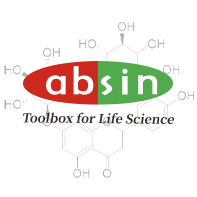Product Details
Product Details
Product Specification
| Appearance | solution |
| Description | Alamar Blue is a cell viability detection reagent, which contains an indicator with cell membrane permeability, non toxicity and weak blue fluorescence, namely resazurin. Resazurin has been cited as a reliable and reliable reagent since 1993. Alma blue is an effective and non-toxic alternative to MTT (thiazolam). Alma blue can quantitatively detect the proliferation of human, mammalian, bacterial, fungal and Mycoplasma cells, and can also be used for cytokine bioactivity, cell viability analysis, in vitro cytotoxicity determination and cell growth monitoring |
| General Notes | 1. The reduced Alamar Blue is very unstable in water or water-soluble buffer such as PBS, but very stable in culture medium. In order to determine the absorbance/fluorescence values of the reduced Alamar Blue in a specific experiment, a 100% reduced Alamar Blue reagent needs to be prepared: Alamar Blue is mixed with cell culture medium in a ratio of 1:10, and high-pressure sterilization is sufficient for 15 minutes<2. Appropriate cell density can increase detection sensitivity. For 96 well plates, it is recommended to inoculate 100&mu per well; L cells, cell concentration range: adherent cells range from 100 to 10000 cells per well, suspended cells range from 2000 to 50000 cells per well, with culture medium as the blank control. For the 384 well plate, both cell concentration and inoculation amount were halved 3. The two main variables that affect the cell response to Alamar Blue are incubation time and laying density. It is recommended to explore and optimize these two factors before conducting experiments. High cell density or prolonged incubation can lead to secondary reduction reactions, where the red product stops increasing and begins to decay, leading to a significant decrease in absorbance/fluorescence levels and accompanied by the disappearance of red<4. Microbial contamination will reduce Alamar Blue. Therefore, using Alamar Blue detection on contaminated cells can cause erroneous results<5. Alamar Blue can be detected using a spectrophotometer or fluorescence meter, but it has high fluorescence sensitivity and small experimental error. Therefore, fluorescence detection is recommended |
| Application | Cell proliferation and toxicity testing |
| Storage Temp. | Protected from light, 1 year |


